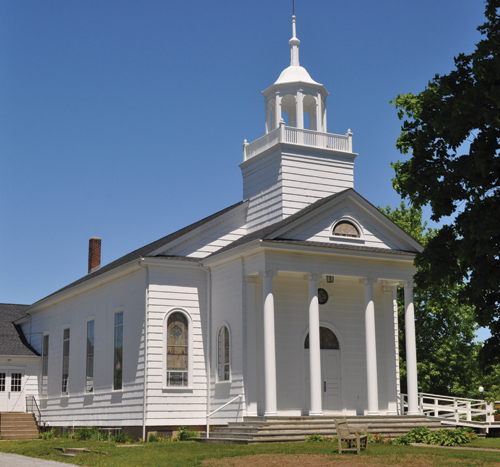Law aims to protect historic churches

Watching a historic church or meeting hall be torn down to make space for a “McMansion” is something Leslie Weisman, chair of the Southold Town Board of Zoning Appeals, doesn’t want to think about.
“It’d be tragic to lose them,” she said at a code committee meeting last week. “They give us a sense of being in New England.”
If a new piece of code recently signed off on by the committee is approved, she and other ZBA members will have less reason to worry.
The local law, which would establish a new zoning area designed for historic buildings to be preserved, is now set to go before the public, as the code committee approved its final draft last Thursday.
The “floating” zone, called a historic preservation district, would allow extended uses for historical properties so long as the outside building is kept in good condition and not altered. The allowed uses under the proposal would include single- and two-family homes, bed and breakfasts, farmers’ markets, artists’ studios or professional offices. Such uses might not normally be permitted in the areas where some of these buildings exist.
The proposed law comes as many local church buildings are being put on the market.
“Every year, it seems they’re always on the chopping block,” said Southold Councilwoman Jill Doherty.
The law would apply not only to churches but to any historic structure owned by a religious or governmental institution, school, fraternal organization, library or fire district.
“What we’re trying to do is maintain the scenic viewscape,” said assistant town attorney Stephen Kiely.
Under the current rules, Town Councilman William Ruland warned at last week’s code committee meeting, a developer could tear down a historic church building in a residential zone to create more housing. That, he said, would destroy part of the town’s character.
Southold Town planner Mark Terry said the new zone would have “numerous checks and balances” to prevent misuse by overeager board members.
Also under the proposal, the owner of a historic building could apply to have a section of his or her property covered under the new zone, which would replace any existing zoning of that space. The program would be voluntary on the part of property owners.
The application would have to run through several boards and commissions before approval: first, certification that the building is historic, then a positive recommendation from the town’s Planning Board and, finally, a public hearing followed by a vote of the Town Board.
The proposed code also contains a rule about damage to the property. If the building covered under the historic preservation district is destroyed, the zoning reverts to the previous rules.
“We don’t want to give people incentive to have a mysterious fire,” Mr. Kiely said.
He added that the Town Board could always vote to allow a business owner to rebuild “in kind” in the event of a true disaster.
Still, the new code would be adaptable on a lot-by-lot basis to allow many types of historic buildings to be included through a “streamlined” process using one application.
“We wanted the upmost flexibility in this code,” Mr. Kiely said. “The community is served by the preservation of the facade … We want to bend over backwards with these developers to have them take advantage of this.”
A date for a public hearing to consider the proposed zoning change has not yet been set.


